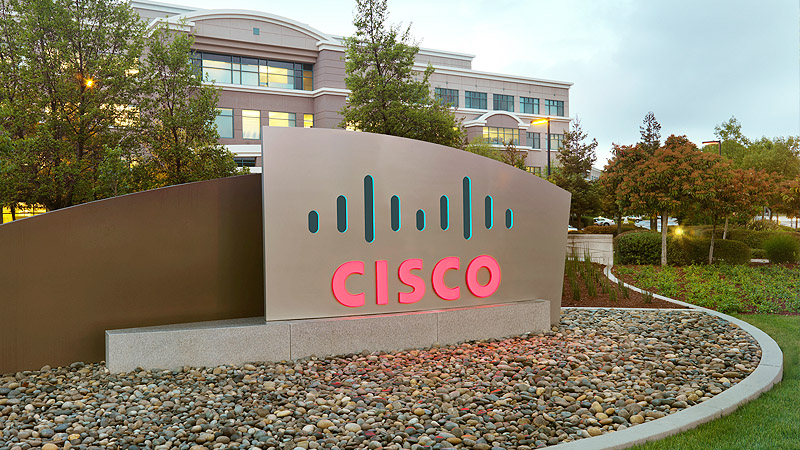SAN JOSE, Calif. - October 21, 1997 - Cisco Systems, Inc. today announced the first in a seriesof products aimed at the voice-over-IP and fax-over-IP markets. The new voice module for theCisco 3600 series routers enables enterprises to integrate voice, fax and data across existingdata infrastructures while significantly reducing recurring communications costs. Customerswho will benefit from the attractive economics of IP-based voice solutions include companiesthat use a mix of WAN technologies such as Frame Relay, leased lines and ISDN and companiesthat intend to extend voice capabilities to desktop applications.
Reduced Communications Costs through Toll Bypass
With Cisco's new voice-over-IP solution, an enterprise can offload branch-office voice trafficfrom the Public Switched Telephone Network (PSTN) and route it across the company's existingdata intranet, thereby lowering voice telephony costs by eliminating toll charges. Inaddition, interoffice fax traffic can be routed across the company's data network or through anextranet, using existing fax machines. Cisco voice modules interface with existing telephones,fax machines, key systems and PBXs, making the process of placing calls over the IP networktransparent to users.
New Opportunities for Service Providers
"In addition to the new applications that voice over IP can offer an enterprise, one of themost compelling reasons to turn to Cisco's voice-over-IP solution is the return on investment,"said Jeff Pulver, president of pulver.com, a leading Internet telephony analyst research firm. "A company with communications between two locations with ten people each calling for two hoursper day can pay off the total equipment purchase in four to five months. Following this, themonthly savings could be up to 50 percent." Pulver continued, "In addition to the costsavings, the technology also represents a future way in which enterprises will be using theirdata networks for the converged services of voice, video and data."
Cisco's leadership in supporting time-sensitive data traffic such as SNA enables serviceproviders to offer differentiated services. Cisco is now extending that leadership to includeservice opportunities in voice/data integration. The Cisco 3600 series is often deployed ascustomer premises equipment (CPE) or customer leased equipment (CLE) by service providers. Themultifunction capability of the Cisco 3600 series enables a variety of managed servicesapplications, such as extranet fax.
Voice Quality
The quality of voice service is a product of the voice compression technology used and thetotal end-to-end latency. The voice processing latency is minimized by Cisco's integrated,router-based design and the industry-leading quality of service (QoS) features of Cisco IOSsoftware, such as Resource Reservation Protocol (RSVP) and Weighted Fair Queuing (WFQ), providethe least possible network latency.
The dedicated DSP architecture provides processing power for voice compression, echocancellation, silence suppression and jitter buffer management without burdening the router. The voice coder-decoder (CODEC) is capable of compressing standard 64K pulsecode modulation(PCM) voice down to 8K. "Having tried various IP-based voice implementations, we wereimpressed by the clarity of heavily compressed CS-ACELP voice in Cisco's solution," said PetriHelenius, chief technical officer, Santa Monica Software in Finland.
Product Description
Based on market-leading technology, each standards-based voice module supports two or fourvoice channels through a variety of voice interface cards. The voice modules support severaltoll-quality compression schemes including G.711 for high-bit rate applications and G.729 forWAN applications.
The Cisco 3600 family of routers has WAN modules that support Integrated Services Digitalnetwork (ISDN) Basic Rate Interface and Primary Rate Interface (BRI and PRI), high-speedserial, channelized T1, E1, integrated digital modems and many others. LAN modules are available that support Ethernet, Fast Ethernet and Token Ring. The Cisco 3600 series router isideally suited to retail, banking and corporate infrastructures because it fully supports allCisco IOS routing protocols.
Cisco IOS Software Voice Framework
Cisco has developed a framework within Cisco IOS software that provides for the complete andseamless integration of voice, data and call control. The framework provides support forstandards such as H.323 for interoperability with third-party telephony software. The H.323specification approved by the International Telecommunications Union (ITU) provides standardsinteroperability among vendors in the telephony and multimedia markets. H.323 clients such asMicrosoft's NetMeeting Selsius' Ethernet Phone have been tested and work with the new Ciscovoice modules.
In early 1998, Cisco will announce larger-scale, higher-density digital voice packet gatewayson a carrier-class platform. These packet gateways will be targeted at corporate aggregationfor voice-over-IP traffic and will enable Internet telephony service providers to offerresidential and business-class services for Internet telephony.
Editor's Note:The voice network module on the Cisco 3600 will support up to two voice interface cards. Thesevoice interface cards come in three different types and each voice interface card has twoports. Each type provides a slightly different interface for connecting to different types ofequipment.
The FXO (Foreign Exchange Office) interface is a connector that allows an analog connection tobe directed at the CO of the PSTN. This interface is of value for off-premise extensionapplications. This is the only voice interface card that will be approved to connect tooff-premise lines. This interface may be used to provide backup over the PSTN or forCentrex-type operations. Since this VIC will need to be approved by local PTTs it will not beavailable in every country at release.
The FXS (Foreign Exchange Station) interface is a connector that allows connection for normalresidential phones, fax machines, keysets and PBXs, and provides ring voltage, dial tone etc. This will be used where phones are connecting directly to the router.
The E&M ("Ear and Mouth") interface is a connector that allows connection for PBX trunk lines(tielines). It is a signaling technique for two- and four-wire telephone and trunk interfaces. This will be a very popular interface for PBX extension-type applications.
The most popular interface in the branch offices will probably be FXS, followed by E&M, thenFXO.
Cisco Systems
Cisco Systems, Inc. (NASDAQ: CSCO) is theworldwide leader in networking for the Internet. athttp://www.cisco.com.
Cisco IOS is a trademark, and Cisco, Cisco Systems, and the Cisco Systems logo areregistered trademarks of Cisco Systems, Inc. in the U.S. and certain other countries. All othertrademarks mentioned in this document are the property of their respective owners.



